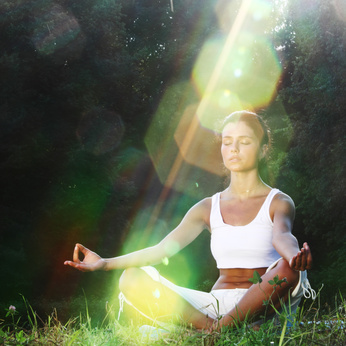Ban the Shoulder Stand
February 23rd, 2012

National Public Radio host John Dankosky interviews William Broad about his book The Science of Yoga: The Risks and the Rewards.
In the1960s a yoga boom took place in the United States and an array of different styles of yoga have since transformed into popularity today. These two gentlemen discuss several rumors and debunk the myths of this culture with yoga practicing callers. Conversely they explain the effects of yoga on the body and mind.
The Risks
Yoga can be dangerous for people with pre-existing injuries. It is important for people to be honest with their instructor if they have special medical conditions and listen to their bodies. If people in a class are preoccupied with comparing themselves to others in the room they could hurt themselves and/or end up in an embarrassing situation.
Broad warns us that there are some poses that no matter how experienced the teacher is and how good we the students are, carry some significant risks of serious injury. These are the shoulder stand, headstand and plough position. Any pose that puts a lot of pressure or a lot of torque on the neck.
In shoulder stand, you’re creating approximately a 90-degree bend between the body, neck, and the mechanism is insidious. There are not well-known arteries that go up through the sides of the vertebrae into the brain. Torquing those things around, and you can tear the inner linings with effects of blood clots. Coming out of the pose, the clots sail into the brain, and you have a stroke. Doctors, orthopedic surgeons, all these people know that extreme bending of the neck in yoga can be a risk factor for stroke. So ban the shoulder stand from your practice.
Bikram is a very popular and controversial style of yoga. Broad explains the sense of elation that people receive from pushing themselves farther, stirring up the hormones, and doing all that stuff in the hot room. Medical experts worry about the loosening of the joints, cartilage and ligaments which could make joints unstable. Then you run a risk of dislocations and sprains. So the downside of Bikram is that you can get too loose. You can carry on this new flexibility in your joints and make yourself more injury prone. He warns listeners to be careful!
Yoga regulates your metabolism, and helps you to slow down, but in a way that happens in the parasympathetic nervous system and helps you to reduce cortisol storage in other things that might cause you to gain weight. It can speed you up. It can slow you down. But in general, the effect is a new inner flexibility that you gain with relaxation.
The Rewards
There’s no question that there’s wonderful benefits for the heart because that relaxation, the lowering of your blood pressure, reducing hypertension, all those things are wonderful for cardiovascular health.
Yoga is also great for relieving depression. Studies done at Harvard and Boston University show that yogis produce a wealth of important neurotransmitters – called GABA – which are essential to mood control and regulation.Yogis feel better because GABA is a strong anti-depressant. The issue is so important because a million people on this planet commit suicide every year because they can’t envision, getting to the next day. They can’t see that light, that optimistic light out there. By doing yoga, you stand a good chance of lifting your mood and being able to cut through those clouds of despondency.
I found this interview to be informative. I previously knew that shoulder stands were uncomfortable and can cause headaches but didn’t know the full extent to the dangers associated with them. Additionally I realized the meditation aspects of yoga helped me find a more conscious sense of awareness but didn’t fully understand that GABA neurotransmitters were being released. It would have been appreciated if they expanded more on the benefits of yoga instead of focusing on the negative so much. It’s obvious that the author is aware that there are proliferative benefits for the mind & body since he along with 20 million are “hooked”.
Thank you and namaste NPR – for educating the world with this knowledge. I’m looking forward to reading to reading John Broad’s book. To hear the interview for yourself please follow the link below.
http://www.npr.org/2012/02/10/146697650/the-science-of-yoga-the-risks-and-the-rewards
Please listen to this song by Reel Big Fish and substitute Tube Top with Shoulder Stand to subliminally remember the pros and consequences of practicing unsafe yoga.
Namaste,
Tarafit™

1 Comments
A lot of people might shrug off resvounness issues. They tell you that it truly is all in your head. You ought to be powerful, give up worrying a lot, or difficult it out. I’m sure from experience that statements like they are far from effective. They could even make your stress and anxiety even worse. You’re left feeling like nobody believes you, wondering if perhaps there exists a specific thing incorrect on your thoughts. When resvounness is severe it may lead to panic attacks. Every person encounters panic attacks within a somewhat different way. I think like my heart is beating particularly quick, even though it is not. It feels like I can’t breathe and my chest hurts. It took a few emergency place visits, two cardiologists, and a large number of bucks just before I uncovered the serious situation.
Leave a comment